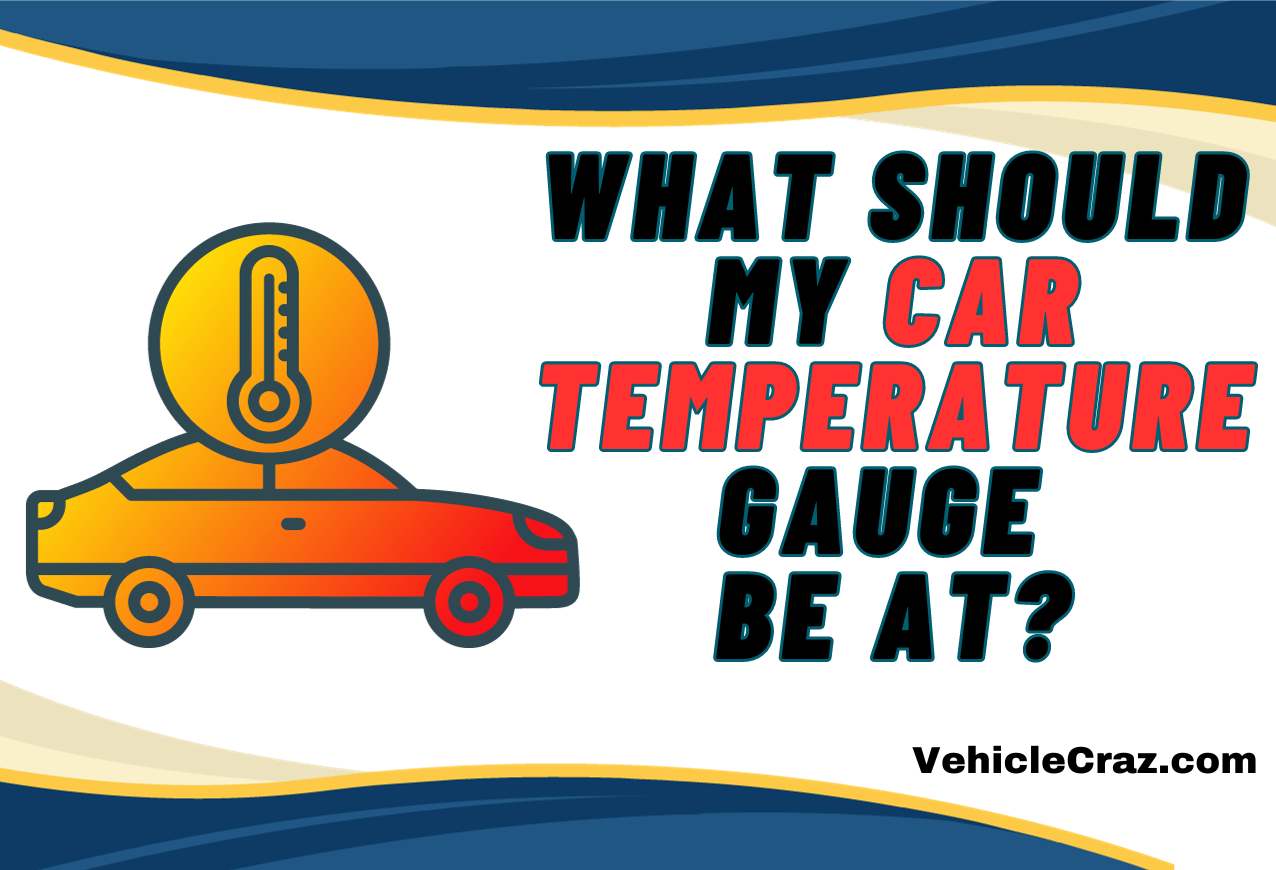What Should My Car Temperature Gauge Be At?
The temperature of any vehicle should be positioned at a certain level because overheating can damage the components as well as cause safety risks. So, what should your car temperature gauge be at?
It is worth knowing the exact temperature that the vehicle can bear so that it is possible to prevent any future breakdowns. Apart from discovering the temperature range, we will teach you how to read the temperature correctly. So, make sure to stay with us till the end!
What Should My Car Temperature Gauge Be At?
In general, your car temperature gauge should be between 195°F and 220°F (90 °C to 105 °C). When your engine is warmed up, the needle on the gauge should settle somewhere in this range, typically near the middle.
However, there isn’t one “correct” temperature for all cars; most vehicles are designed to operate within a specific range. As per our experience, there are some factors that affect temperature levels.
- It’s important to note that the ideal temperature can vary depending on your car’s make and model. To get the most accurate information, you have to check your car’s owner’s manual. It will provide the specific temperature range that is normal for your vehicle.
- When you start your car, especially in colder weather, it’s normal for the temperature gauge to start lower and gradually rise to the operating range as the engine warms up.
- Things like air conditioning use and driving conditions (like climbing hills or towing) can affect the gauge reading too. So, a slight fluctuation within the normal range is usually nothing to worry about.
In a healthy car, once the engine is warm, the gauge should stay relatively steady in the normal range. If it moves into the hot zone, or if you notice any symptoms of overheating (like steam from the engine, a hot smell, or warning lights), it’s important to address it immediately, as it could indicate a serious problem.
In case you’re ever unsure or notice persistent unusual readings, it will be a good idea to consult a mechanic.
How to Read Your Car Temperature Gauge?
In order to read your car temperature gauge correctly, you should have an idea about the gauge’s icons. Let us help you understand the car’s engine temperature gauge in a way that’s super easy and straight to the point.
Cold and Hot Zones
Picture your gauge like a traffic light. One side (usually marked in blue) is the cold zone, and the other side (usually in red) is the hot zone. The area in between? That’s where you want your needle to be when the engine is happy and warm.


For most cars, the sweet spot for the needle is right in the middle. This is usually between 195°F and 220°F (90°C and 105°C), as we already mentioned above.
Numbers Game
Some modern cars’ gauges are super helpful and show you the exact temperature. If yours does this, give your car’s manual a peek to see what temperature range is best for your specific car.
Understanding the Needle Movement of Temperature Guage
Normal Behavior: When you start your car on a chilly morning, the needle will hang out in the cold zone. As you drive, it’ll climb up to the middle. That’s when your engine warms up at its ideal temperature.
Red Alert: If your needle sneaks into the hot zone, it’s like your car is saying, “Help, I’m too hot!” Then, pull over safely and turn off the engine to avoid any serious trouble.
Jumpy Needle: If your needle is acting like a jumping bean, moving quickly and erratically, this might mean there’s an electrical issue or a problem with the sensor.
Additional Tips When Reading the Temp Gauge
- Keep an eye on your gauge, just like you would watch your speed. Noticing any weird changes can help catch problems early.
- If your gauge is in the danger zone (the red zone), it’s not something to take lightly. If it happens persistently, get your car checked.
- Unsure about what your gauge is telling you? It’s totally okay to ask a mechanic. Sometimes, getting a professional opinion is the best move.
Why Does My Car Temperature Gauge Fluctuate?
If your car’s temperature gauge often fluctuates, there can be an issue. Understanding why this happens can really ease your mind, so let’s walk through some common reasons why your car’s temperature gauge might be more bouncy than usual.
Faulty Temperature Sensor
This little device has a big job. It tells your gauge what the engine’s temperature is. If it’s having a bad day (think broken or just acting up), it can give you some pretty wild readings. You might see the temp gauge needle jumping around or getting stuck. It’s like the sensor is sending mixed signals.
Thermostat Troubles
Imagine the thermostat as a traffic cop for your engine’s coolant. If it’s not working right, the coolant might not get where it needs to go. This can make your engine either too hot or too cold. In fact, we’ve seen thermostats cause all sorts of temperature drama!
Coolant Level
Low coolant? That’s a common issue. Or maybe there’s air trapped in the system, or the radiator is clogged. Any of these can make it hard for your engine to stay at a steady temperature.
Electrical Problems
Cars have a bunch of wires and connections behind the scenes. If something’s not quite right there – maybe a loose wire or a tired gauge – your temperature reading can get a bit wacky.
Driving Conditions
Your driving style and conditions can also play a role. Stuck in traffic, climbing a steep hill, or pulling a heavy load? These can make your engine work harder and heat up more than usual. Usually, the gauge settles down once things get easier for the engine.
For more info, we recommend you read our guide on “How to test car temperature guide.”


I’m Alex, a seasoned mechanical teacher with over 20 years of hands-on experience in Australia. My passion for all things automotive has driven me to establish this blog, aiming to share my wealth of knowledge and expertise with fellow enthusiasts, DIYers, and anyone keen on understanding the mechanics behind the machines we rely on daily.




![Coolant Mixed With Transmission Fluid? [Causes And Fixes]](https://vehiclecraz.com/wp-content/uploads/2024/03/Maximum-Level-3-768x524.jpg)


